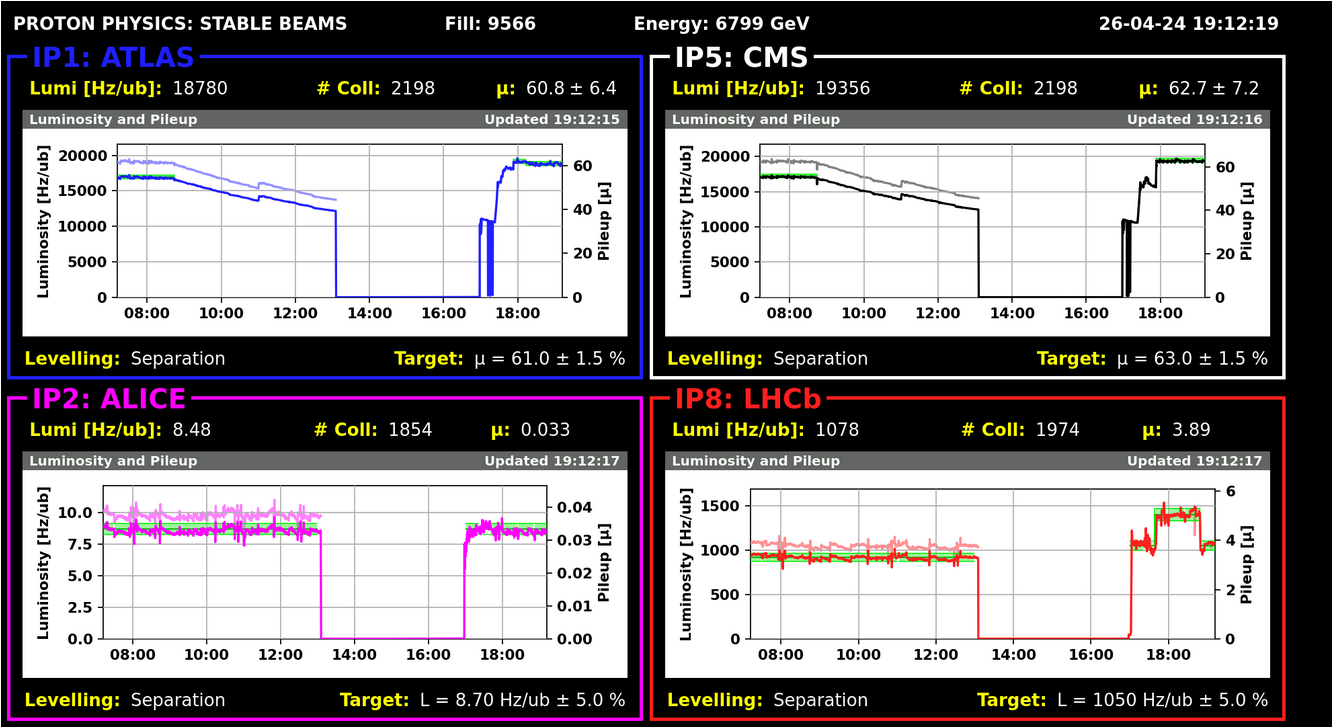LHC and ATLAS resume measurement campaign for 2024
LHC gears up the luminosity delivered to the ATLAS detector.
26.04.2024
After the end-of-year break LHC and ATLAS resume the third long measurement campaign with proton-proton collisions. Before eventually cranking up the beam energy to 14 TeV, LHC is establishing stable beams at the last year's collision energy of 13.6 TeV. The operating group of LHC is adjusting the beams in the accelerator to fit the delivered beam intensities to what the large particles detectors like ATLAS can digest. The figure below shows a snapshot of the delivered luminosity and a target quantity μ which indicates the so called pileup of collision events. In fact, the beam intensity of LHC is so high that at each collision of proton bunches in the center of the ATLAS detector on average μ interations of a proton with another proton happen. The target is currently μ=61 proton-proton interactions per bunch collision, and bunch collisions happen every 25 ns. So the current rate of proton-proton interactions in the center of the ATLAS detector is 2.44 billion per second! This is a real challenge for the particle detector but it is the price to pay if we want to find very, very rare processes involving new particles due to new physics phenomena. To manage this huge amount of interactions, a very sophisticated selection system (called trigger) is used for the ATLAS detector. The trigger filters about 1000 interactions out of the 2.44 billion per second. These 1000 events per second are recorded to disk and are analysed in the search for signatures of new particles.


